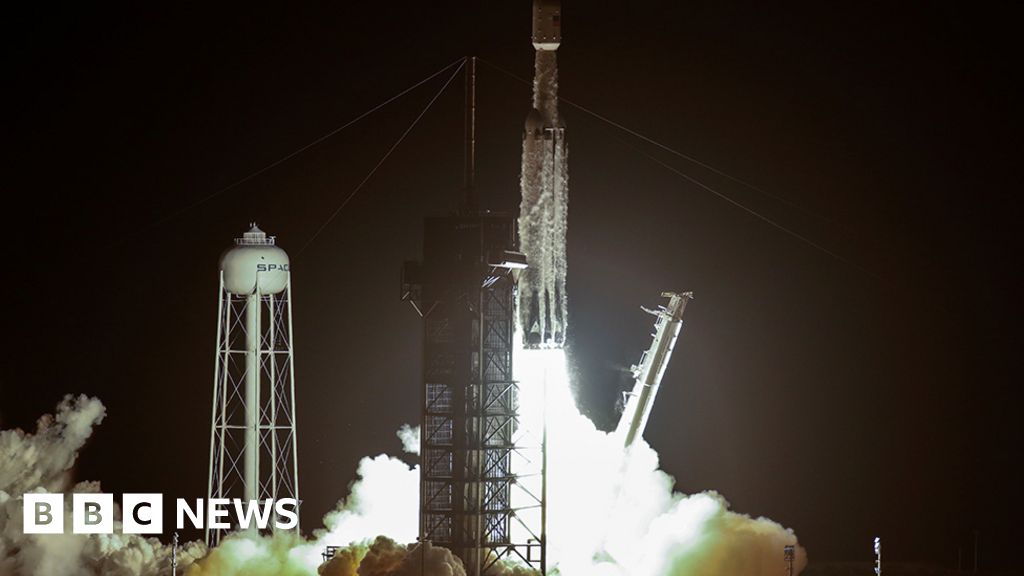
Nasa has put a miniaturised atomic clock in orbit that it believes can revolutionise deep-space navigation.
About the size of a toaster, the device is said to have 50 times the stability of existing space clocks, such as those flown in GPS satellites.
If the technology proves itself over the next year, Nasa will install the clock in future planetary probes.
The timepiece was one of 24 separate deployments from a Falcon Heavy rocket that launched from Florida on Tuesday.
The other passengers on the flight were largely also demonstrators. They included a small spacecraft to test a new type of "green" rocket fuel, and another platform that aims to propel itself via the pressure of sunlight caught in a large membrane; what's often called a "lightsail".
But it is the mercury-ion atomic clock, developed at Nasa's Jet Propulsion Laboratory (JPL), which has had most attention.
Today, deep-space probes are tracked across the Solar System via radio signals.
These signals are sent from Earth and are immediately returned by the spacecraft. The very precise time taken for the speed-of-light messages to echo back enables navigators to work out the mission's exact position and to command the necessary course corrections.
But if probes carried their own atomic clocks, this two-way system could be reduced to one-way, and the missions' onboard computers would then make all the necessary navigational calculations.
The atomic clocks currently used on Earth for deep-space navigation are refrigerator-sized. JPL's engineers have shrunk this down to something that can easily be accommodated on a spacecraft.
Deputy principal investigator Jill Seubert said "self-driving spacecraft" were one of the top technologies needed to put humans on Mars.
"Autonomous onboard navigation means that a spacecraft can perform its own navigation in real-time without waiting for directions to be sent from navigators back here on Earth. And with this capability, a human-crewed spacecraft can be delivered safely to a landing site with less uncertainty in their path," she told reporters.
Don Cornwell, from Nasa's Space Communications and Navigation Program, added: "Of course, for a spacecraft travelling well beyond Earth orbit, the smallest clock inaccuracies can lead to large navigational errors. But [the new clock] has a high degree of clock stability, meaning it can maintain its accuracy over many years.
"The deep space atomic clock's design should gain or lose less than 2 nanoseconds per day, or an error of one second in nine million years."
The development of the spacecraft chassis, or bus, that is carrying the clock was begun by the British manufacturer Surrey Satellite Technology Limited at its US division, which was then later sold to the American General Atomics company.
Surrey itself had an interest in six other spacecraft launched on Monday's Falcon Heavy.
The UK firm assembled this sextet of platforms to be part of a constellation known as FORMOSAT-7. It is a joint US-Taiwanese initiative to monitor the weather by interrogating the way radio signals from GPS satellites are affected as they pass through the atmosphere.
Tuesday was the third time a Falcon Heavy had flown. The rocket is essentially three Falcon-9 rockets strapped together.
As is customary now for the rocket operator SpaceX, the three boosters were commanded to come back to Earth under control once they had finished the job of sending the multi-satellite mission on its way.
Two of the boosters successfully landed back at Cape Canaveral. The third just missed its touchdown target on a drone ship out in the Atlantic.
Bagikan Berita Ini















0 Response to "Nasa puts up deep-space atomic clock - BBC News"
Post a Comment